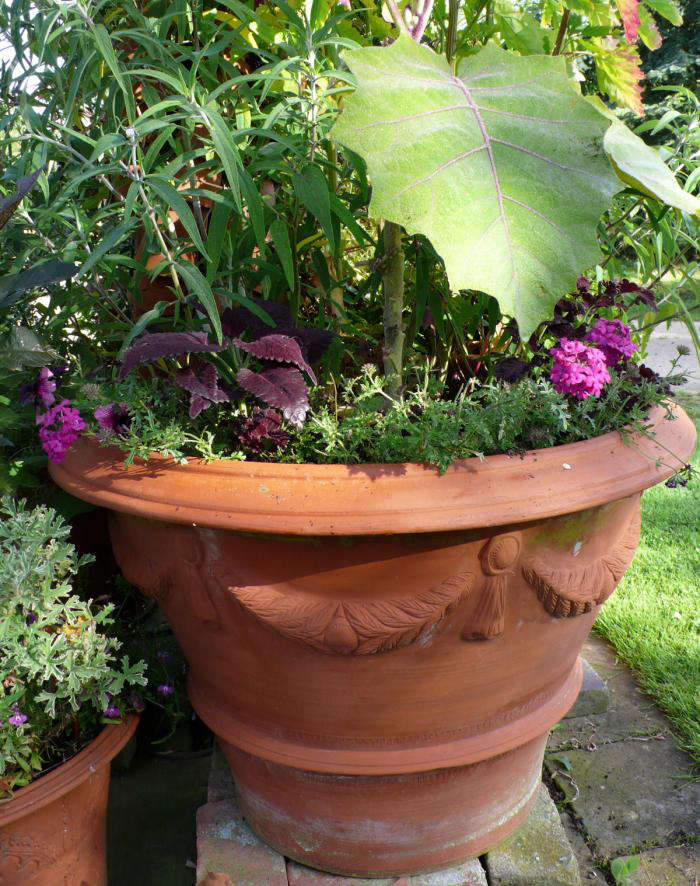Whichford terracotta is easy to spot. Over-sized and lined up in a grand old potager, the tubs will be from Whichford. Filled with agapanthus and dotted around a lovely pool: the same. Smaller pots are prized in smaller gardens. It’s not a snob thing: it’s a lot to do with shape, decoration and humanity.
“We may be steeped in tradition, but we are not always old-fashioned,” says Jim Keeling, who founded Whichford Pottery in the 1970s with his wife Dominique. Their son Adam was working on a special commission when I was at their cheerful pottery in the North Cotswolds earlier this week and it is very much a family business, employing 25 local workers. The pottery is appreciated for its innovative techniques as well as traditional high quality craftsmanship and is a joy to walk around: visitors are encouraged to go inside the pottery and see the attention given to each pot.
Photographs by Kendra Wilson for Gardenista.

Above: The sales yard at Whichford, near Shipston-on-Stour. Massive pots are kept in stock or can be made to order. Jim Keeling can sculpt anything out of terracotta. Having studied Archeology and History at Cambridge he is an expert on the history of garden ornament, and it shows in every design.

Above: The Italianate Pot, from £52 for a 15-inch pot. A mold is used to apply the design.

Above: The Gothic pot, from £135, for a 16-inch high container. Hand-thrown, decoration meticulously applied after.

Above: The Armscote pot, decorated with randomly applied bees, is inspired by a local beekeeping and fundraising lady. The surface has been sprayed with a terracotta ‘mist’ and looks subtly more aged.

Above: Wall pot inscribed for the Royal Botanical Garden, Kew. The bespoke service is very busy, for personal use and for larger establishments like Trinity Hall, Cambridge. Gilding and hand-written messages may also be applied, as well as coats of arms, crests, motifs etc. The mould will be kept forever, like a shoe last at a gentleman’s shoemaker in Piccadilly.

Above: Giant pot decorated with a gilded peacock, sculpted by Jim Keeling. Price: £3,250.

Above: There is a 10-year frost-proof guarantee, proudly proven by my own 20-year-old shell-patterned pot. It has only improved with age and is proud host to the cultures living on its surface. Pattern applied using shells.

Above: The pots are made from a blend of three different clays, sourced from Shropshire, Berkshire and Gloucestershire (the latter, from Blockley, is a local clay).

Above: After blending, the clay is sieved and pressed, de-aired and then left to mature for at least three weeks. The resulting material, seen here, is ready to go.

Above: All the pots are hand-decorated and most are hand-thrown. Very ornate or over-sized pots are set in a special mold.

Above: Pots which can be lifted by one person are tossed through this hatch and caught by an attentive person below. A medium-sized pot will be allowed to dry for three weeks before spending three days in the kiln.

Above: The iconic lattice pattern is synonymous with Whichford and is influenced by Tudor designs. Every pot is stamped and also bears a mark from its individual maker. The small hole near the rim is for the Whichford label.

Above: These very large pots which take up a lot of space (some are about three feet high) wait in a stock yard.












Have a Question or Comment About This Post?
Join the conversation (2)